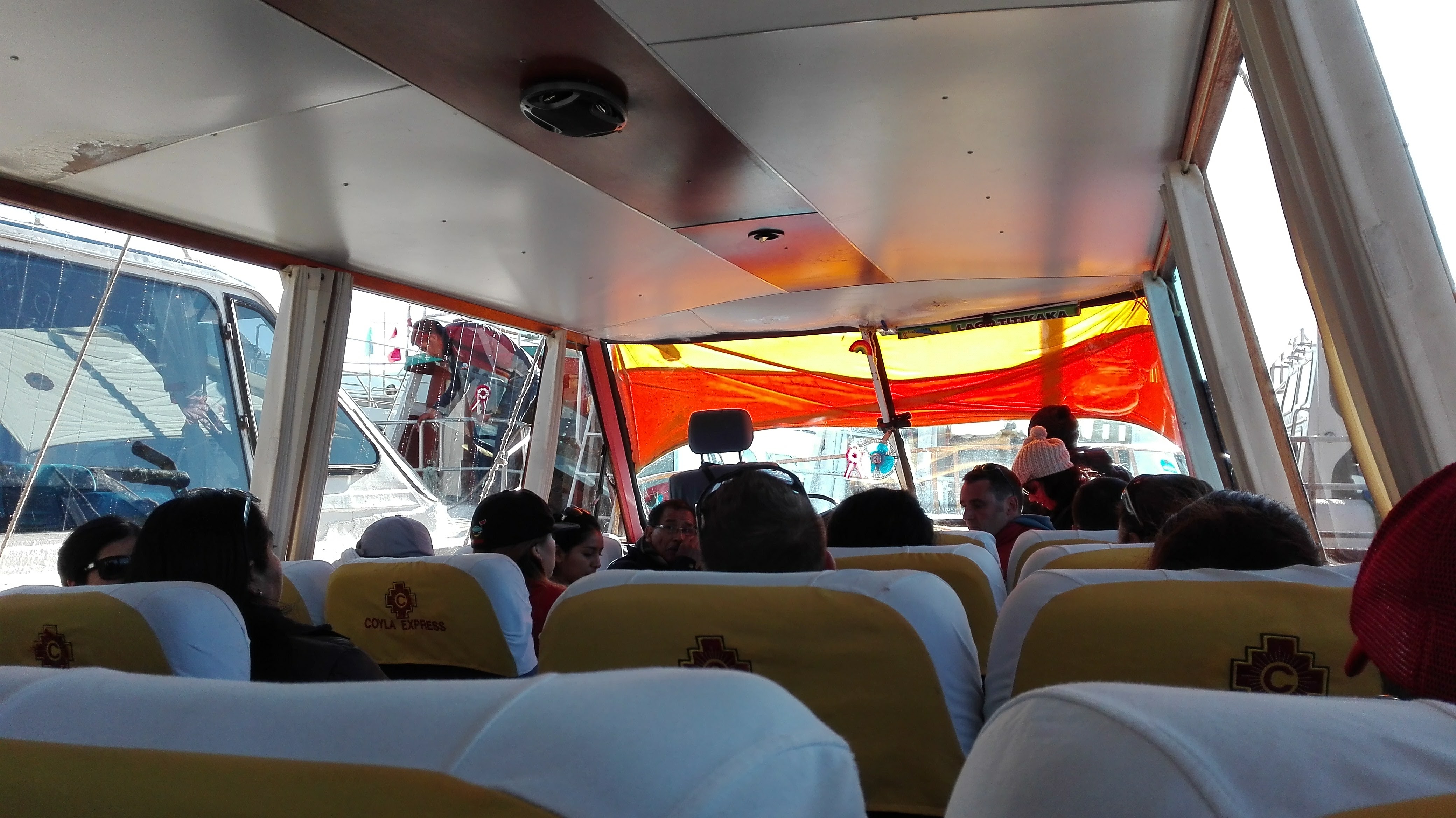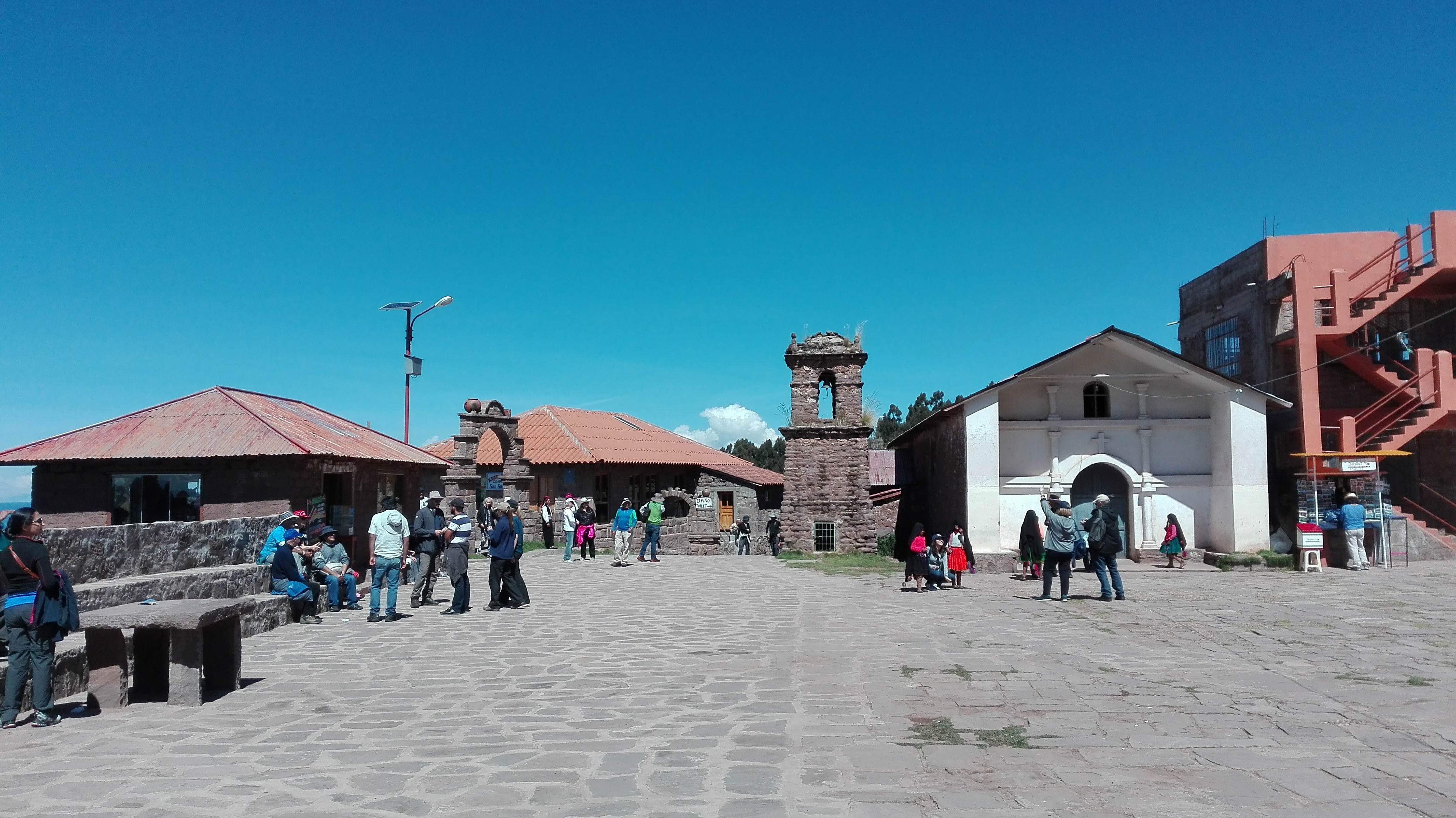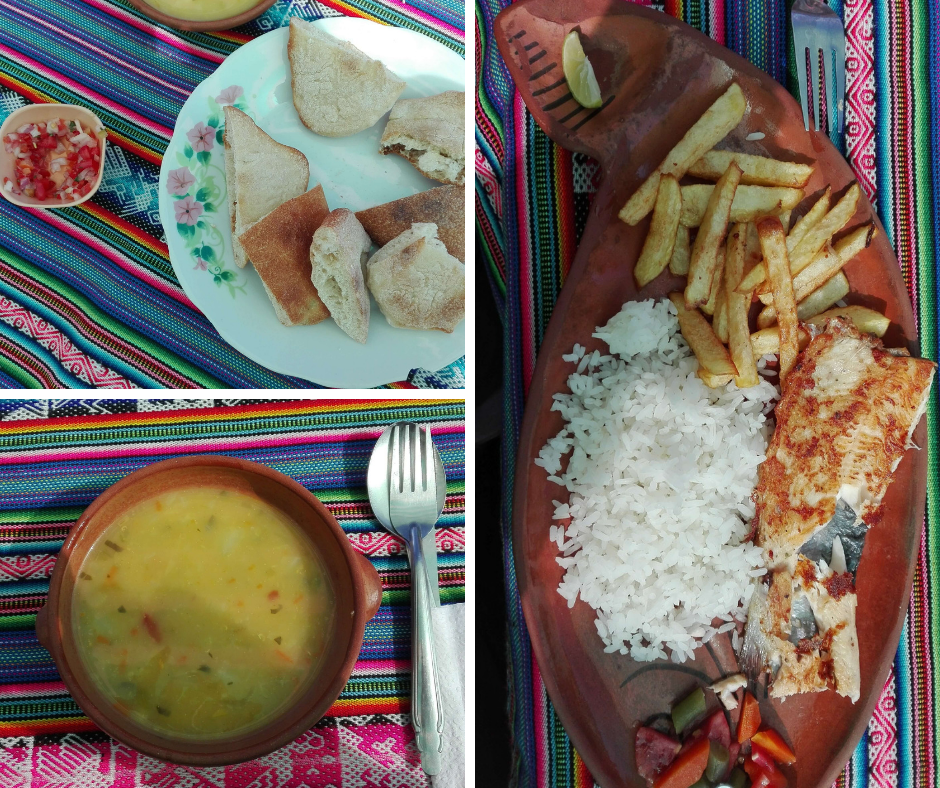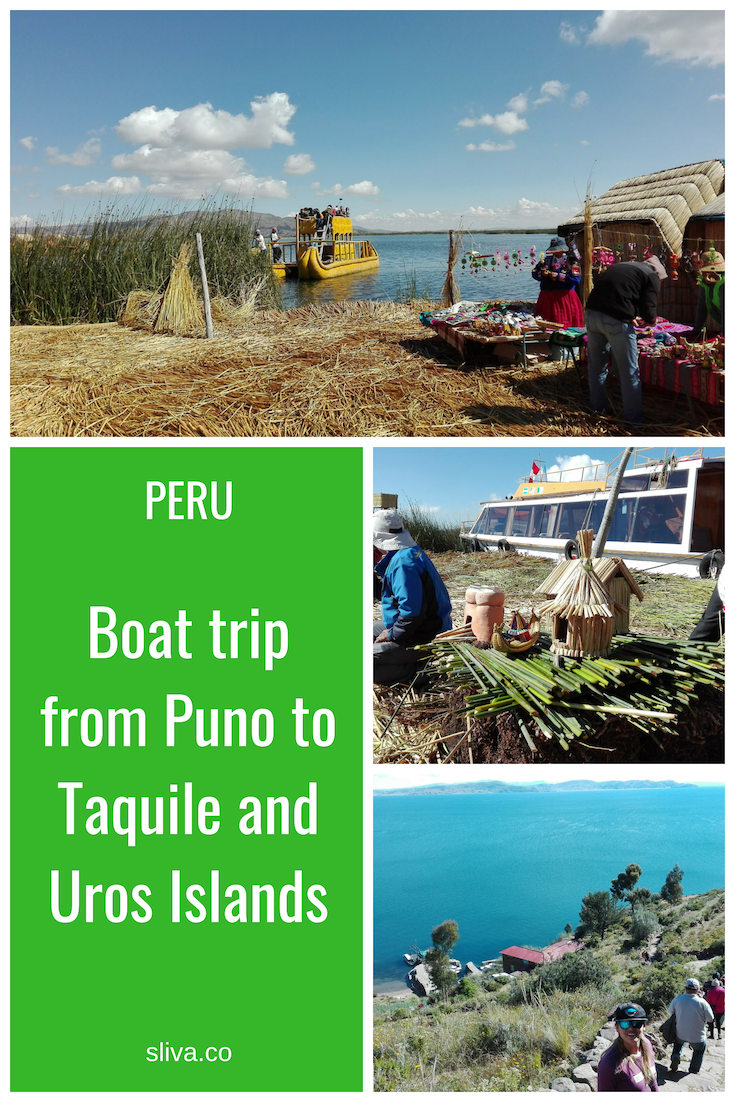“Why on Earth did we want to travel here?!” was our first thought when we were observing Puno from the bus. Out of the bus, the city seemed pretty scary, there was a lot of half made houses, or houses without the rooftop, dirty streets,… Prior traveling into the city we read online that Puno has a high crime level, which makes everything even worse. According to our online research, about 90% of the people living in the city is directly or indirectly linked with the drug dealing transport over the lake from the neighbouring county Bolivia.
Why we went there? Well, to see the highest navigable lake in the world, the one and only Titicaca Lake.
P.S.: Later on, we found out that a lot of houses are roofless since in Peru houses that were not completely built didn’t need to pay some tax on the house. Now this is not the case anymore, but in Puno still a lot of houses are rofless.

Puno and Lake Titicaca
Lake Titicaca is located in the Andes, on the border between Bolivia and Peru, at an altitude of 3,812 m (12,507 ft). It’s also the largest lake in South America by volume of water and by surface area.
The lake is very important for the inhabitants around it, because the lake is a source of potable water. We highly recommend you to buy bottled water when traveling around Peru. Lake is also full of fish and amphibians. There are many trouts in the lake, which are not native fish, but were introduced into the lake artificially and thus made an ecological catastrophe since these fish now eats native fishes.
To be honest, there is not that much to see in the Puno city. The city center is relatively small, and you don’t need much of a time to see it: you will not need more than a half of a day.

Tip: be careful if you decide to eat outside, the restaurants on the main pedestrian street are made for tourists, and the prices of food and services are set according to that fact. Although Peru is not a very expansive country to travel, the main tourist points and attractions (like a train to Machu Picchu) will be hard on your pocket. Unlike Cusco cuisine, which is really delicious, food in Puno is nothing special, at least by our taste.
Otherwise, we haven’t stayed in the city for a long time, 3 days all together including the day of arrival and departure, due to our tight schedule around Peru. We have opted for a day trip to the Uros islands and the Taquile island. We have booked a trip right in the hotel in Puno where the friendly staff explained us everything – we had three options to choose from. Actually, all 3 options/trips were completely the same, the difference was only in the price – a higher price meant a faster boat. As we traveled on a budget, we choose the cheapest option, which we almost regretted later on.
Uros Islands
So on the day of the trip, the taxi driver picked us in front of the hotel early in the morning and took us to the port where we boarded one of many boats with our tour guide. Very early on we start regretting the cheapest option, as after only a few hundred meters of floating the boat stopped completely, as the water flooded the engine. At that time I sincerely hoped that we will not sink and this trip will not end up as a disaster. However, nor the driver, nor the guide worried about the situation (I guess this is a regular practice?!?). The boat driver drained water from the engine with the bucket, and after 10 minutes, the boat was operational again to take us to one of the Uros islands.

To make it clear: Uros islands are not really islands, but they are artificially made floating islands that Uros people make themselves from totora reeds that grow in the water. A few-hundred years ago, when the Inkas empire was rapidly spreading around the area, the Uros people who lived along the Titicaca lake didn’t find a “common language” with Incas. They believed that Titicaca lake is their property, and that they should not be ruled by the Incas. That’s why they retreated to their boats made of reeds. Soon they figured out that they can’t really live on small boats, so they invented the technique to build their own islands.
Life on these islands is anything but simple. The islands need to be constantly re-built, so that they do not sink, as the part of the island (reeds) is constantly decaying in the water. In addition, this lake is located high in the Andes, where nights, and especially winters, are extremely cold.

So we have made a stop in one of many Uros Islands, where the guide explained to us all about the life on those islands, as well as demonstrated the work and life of people on the islands. Typical food is of course fish, which are dried in the sun. After a detailed explanation, we had some free time on the island (not much to see as this is was an extremely small island, like all of them) – mainly they left us the time for buying souvenirs, and to take a ride with the two-storey boat made of reeds.


I have to admit that we were a little bit disappointed with the souvenirs, as many of them were made of plastic and imported from the land, which was certainly not in any way related with the local people, but is rather an import from China. Not that we have anything against China and globalization, after all this makes our travel so much easier and cheaper, but we felt that those souvenirs don’t belong to the islands, for the sake of the tourism. Would much rather see a local products, and actually end up buying them.
After an hour or two, we said goodbye to Uros people, and set on the boat to the Taquile Island.
Taquile island
Taquile island is unlike Uros islands a “real” island of geological formation, located about 45km from Puno. On the island, about 2200 inhabitants – Taquilenos live, who speaks Puno Quechua language. The island with its inhabitants is best known for their skills in making hand-made produce – they produce fine handwoven textiles and clothing.
On Taquile island, we also had a lunch, as a part of our trip, but to get to the meal, we had to make a bit of a trek. Namely, on the island, there are quite a lot of local “restaurants” and we had a lunch in the last one on the island. 😛 The island community has agreed that each tourist group eats in one of the restaurants, so all of them serve to about the same number of visitors each year. That way, every restaurant can survive.
The track from the boat took us first up the hill, towards the island village. On the way up, you can admire how locals farm, and even buy some souvenir from children in their traditional costume. The island village is small with one “grocery” shop, well it’s more like a snack and drinks shop for tourists. You can also visit the museum of handwoven textiles and clothing and even buy some of this products, there is also a small photography place/museum full of photos about island past life.


No matter in which restaurants on the island you are going to eat, you will get the same food served. First, we got a bread with Peruvian spreads, and after that, a vegetable soup. For the main dish, was fish – trouts (of course!), with baked potatoes, rice, and grilled vegetables. As I am a vegan, I have asked only for potatoes, rice, and grilled vegetables and there was no problem arranging that on the spot. 🙂 The meal was super delicious, not sure if it was only because we were all very hungry, hah. After the lunch, three local men played their traditional music.

Have to say that even though we had to walk quite a bit to get to the restaurant, we had a lunch at the top location. From the table, we could see the lake, the view was absolutely magnificent.

Under the restaurant, there were stairs, taking us down the hill, back to the boat – the opposite side of the island, as we get on the island, and we walked through the famous doors, leading to the main square – in the opposite direction of course. And from there, we sailed back to Puno.
That’s our experience on a boat trip from Puno to Taquile and Uros Islands, what’s yours? Have you ever visit the Titicaca Lake? Let us know in the comment below.
Pin for later…
 |
 |
 |
Author: Urska
Urška is working in AgTech startup and love to spend time outside in nature. She like to do outdoor sport such as hiking, running, and swimming in the sea. Her biggest wish is to travel the world to explore new cultures and try out all the delicious fruits mother nature has to offer.




What a fascinating place. Thanks for this honest review of your experience.
I loved it!!! the Uros Islands experience was amazing for us but we didn’t get to go to Taquile. Next time we will use you blog us a guide!
Awesome! 🙂
What a great article about an interesting place! I never imagined a floating island made of reeds, let alone one that people live on. Fascinating! I’d love to visit the Uros Islands, but, like you, I wish they made their own souvenirs if they wanted to sell something. I’m sure they would be more successful. Great experience! Thanks for sharing.
Thanks! Yeah, Uros Islands are really fascinating. Well worth to visit it, just as Taquile island.
The roofless homes are a new one to me — interesting! The views of the lake are lovely and the hike looks like fun. I’ve heard the name of this lake but I had not idea where to find it!
Heh, yeah it has a very memorable name. 😀 Titicaca Lake is definitely worth a visit.
How interesting that a lot of the houses are without roofs, and thank you for the tip on eating in tourist restaurants! Those views though, absolutely stunning. Thank you so much for sharing this information with us, pinned.
Thanks, Angie!